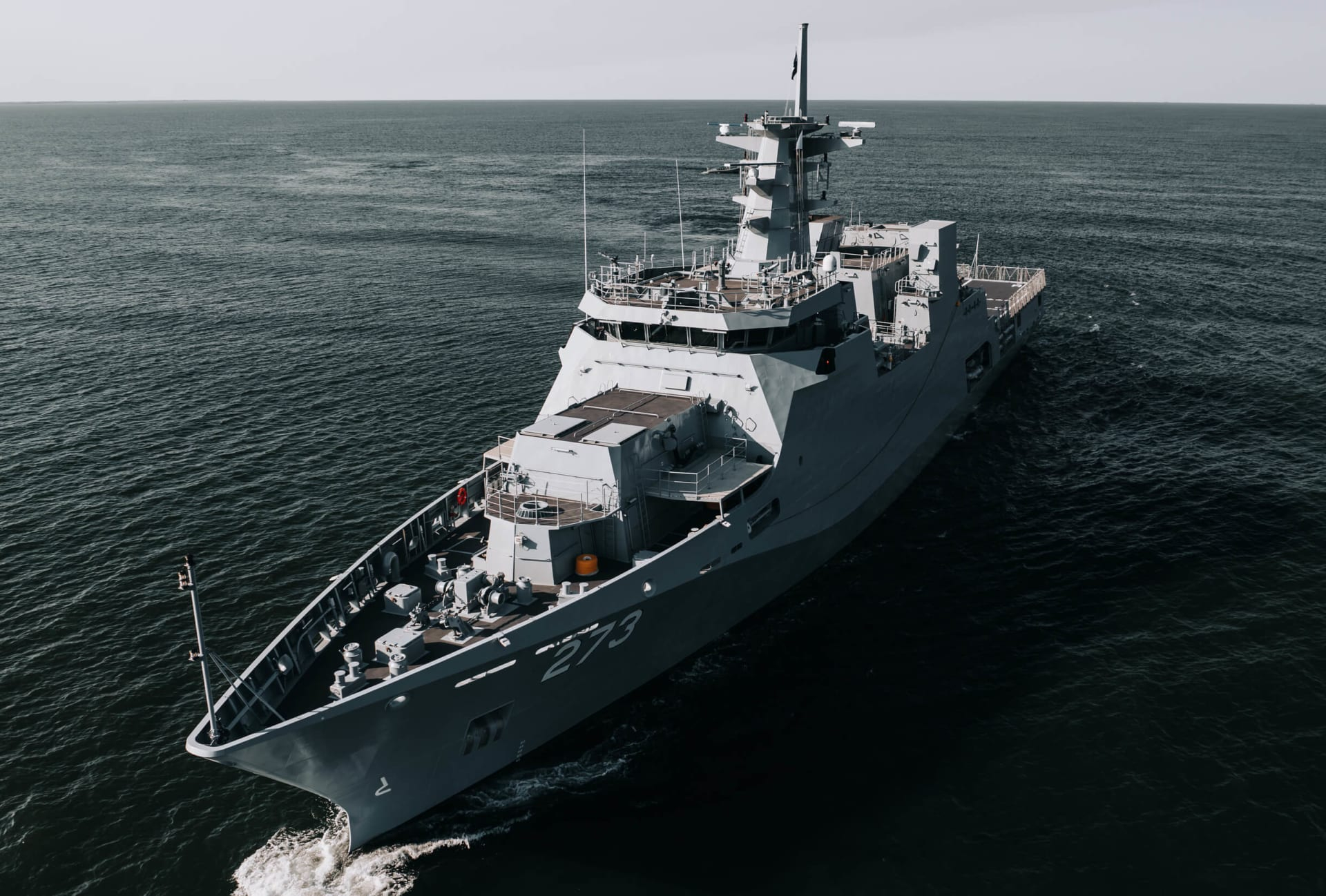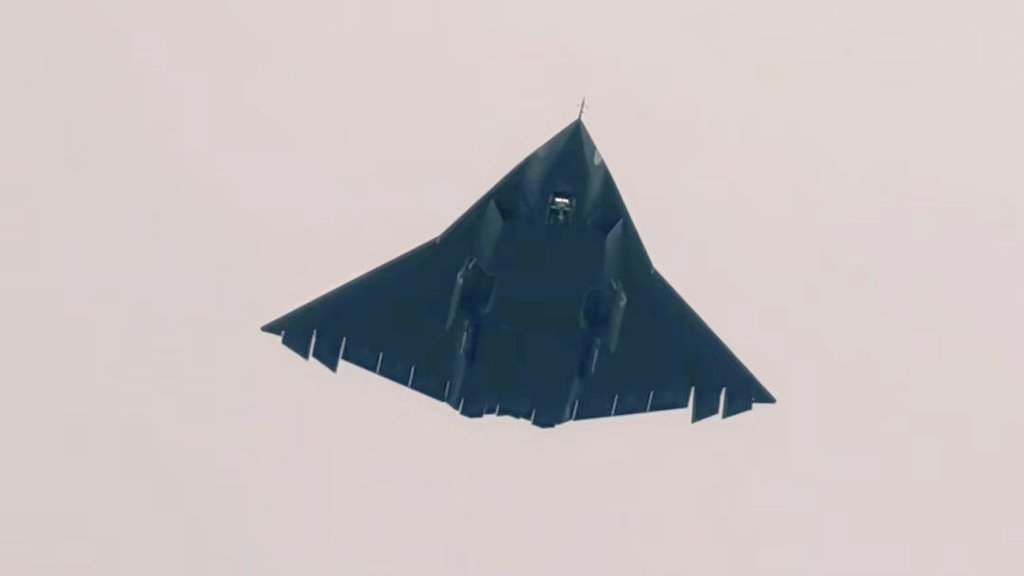SOURCE: AFI


In a significant milestone for India’s naval self-reliance, Mazagon Dock Shipbuilders Limited (MDL) marked the commencement of production for the first Air Independent Propulsion (AIP) system for the Indian Navy’s Scorpene-class submarines. The production plate cutting ceremony took place today at MDL’s facilities in Mumbai, presided over by Mr. Biju George, Chairman and Managing Director of MDL. He was joined by representatives from the Indian Navy and other senior MDL officials, underscoring the collaborative effort behind this ambitious project.
The ceremony signals the start of construction for the AIP plug, a critical enhancement designed to boost the underwater endurance of the Scorpène-class submarines under Project 75 (P-75). This indigenous AIP system, developed by the Defence Research and Development Organisation (DRDO) in partnership with Indian industry, will be integrated into the submarines during their scheduled normal refits, beginning with INS Kalvari in September 2025.
Continue readingSOURCE: AFI


In a pointed diplomatic exchange, India’s Defence Minister Rajnath Singh has called on his Dutch counterpart, Ruben Brekelmans, to cease supplying weapons and military technology to Pakistan, a nation India accuses of sponsoring terrorism. The request, made during a high-level meeting in New Delhi on March 18, 2025, underscores India’s growing concerns over the Netherlands’ role as a significant arms supplier to Pakistan, particularly in the naval domain.
The Netherlands, a key member of the European Union, ranks among Pakistan’s top three weapons suppliers globally, trailing only China and Turkey. Over the years, Dutch defense exports to Pakistan have included advanced naval platforms such as minehunters and offshore patrol vessels (OPVs), bolstering the Pakistan Navy’s capabilities. These transactions, facilitated by Dutch shipbuilder Damen and involving former Royal Netherlands Navy assets, have drawn sharp scrutiny from India, which views Pakistan’s military buildup as a direct threat to regional stability.
Continue readingSOURCE: RAUNAK KUNDE / NEWS BEAT / IDRW.ORG


Dr SV Ramana Murty, Director of the Gas Turbine Research Establishment (GTRE) under the Defence Research and Development Organisation (DRDO), has made a significant announcement regarding the funding required for the development of an advanced engine for India’s AMCA (Advanced Medium Combat Aircraft) fighter jet program. Speaking on the technological demands of the project, Dr Murty emphasized that the engine, aiming for a thrust class of 110-120kN, would necessitate an investment of around USD 4.5 billion.
The new engine will incorporate advanced features like improved thrust-to-weight ratio, enhanced fuel efficiency, higher durability, and possibly elements of stealth technology, all of which are crucial for the performance of a modern combat aircraft.
Continue readingSOURCE: RAUNAK KUNDE / NEWS BEAT / IDRW.ORG


Amid ongoing delays in the supply of General Electric’s (GE) F404 engines for the Tejas Mk1A program, a senior official from Hindustan Aeronautics Limited (HAL), speaking to idrw.org on condition of anonymity, has clarified that the company has no plans—nor is it considering—replacing the current F404 engine with alternative options.
Despite the supply chain bottlenecks, HAL and the Indian Air Force (IAF) remain aligned in their commitment to the F404, with expectations that GE’s deliveries will stabilize and pick up pace from 2026 onwards. The decision underscores the technical and logistical complexities involved in switching engines, which could further delay the induction of the Tejas Mk1A into IAF service.
Continue readingSOURCE: RAUNAK KUNDE / NEWS BEAT / IDRW.ORG


Hindustan Aeronautics Limited (HAL) is set to achieve a significant milestone in its Light Combat Aircraft (LCA) Tejas program, as its Nashik plant prepares to roll out the first Tejas MK1A from its newly established third production line. According to the latest updates, this rollout is expected by late April 2025, slightly delayed from the originally anticipated timeline of March 2025. The development underscores HAL’s ongoing efforts to enhance production capacity and meet the Indian Air Force’s (IAF) growing demands for advanced indigenous fighter jets.
Sources indicate that the first Tejas MK1A from this production line is nearing completion, with final assembly and testing phases well underway. The aircraft is projected to be fully ready by the end of April 2025, marking a pivotal moment for HAL’s Nashik facility, which has emerged as a key hub in the Tejas manufacturing ecosystem. While the rollout was initially slated for late March, minor adjustments in the production schedule have pushed the timeline by a month, reflecting the complexity of integrating advanced systems into the MK1A variant.
Continue readingSOURCE: AFI


In a recent development that underscores the complexities of international defense relations, Turkish President Recep Tayyip Erdogan reportedly expressed frustration to U.S. President Donald Trump over what he perceives as unequal treatment in the distribution of advanced military technology. According to reports, Erdogan complained that while the United States has offered its cutting-edge F-35 stealth fighter jets to India, Turkey remains excluded from the F-35 program, a sore point in U.S.-Turkey relations that has lingered since Turkey’s expulsion from the program in 2019.
For Turkey, a NATO ally since 1952, participation in the F-35 program was seen as both a strategic necessity and a marker of its standing within the alliance. Turkey initially planned to acquire at least 100 F-35A jets, with its industry playing a significant role in the global supply chain, producing critical components like parts of the airframe.
Continue readingSOURCE: AFI


The Indian Army’s T-72 Main Battle Tank (MBT), a stalwart of its armoured formations, has recently been spotted with significant defensive enhancements, as seen in the latest images circulating online. These upgrades include canopy slat or cage armour, ball-and-chain protection around the turret and rear, and additional armour tiles over the engine block. These modifications signal a pragmatic response to evolving battlefield threats, particularly in the context of modern anti-tank warfare and lessons learned from recent global conflicts.
One of the most visible upgrades in the latest images is the addition of canopy slat or cage armour over the turret. Often referred to as “cope cages” in military circles, this type of armour consists of a metal framework or slatted structure mounted above the tank’s turret. The primary purpose of slat armour is to disrupt the fusing mechanisms of top-attack munitions, such as ATGMs like the FGM-148 Javelin or kamikaze drones, which rely on shaped charges to penetrate the thinner top armour of tanks.
Continue readingSOURCE: AFI


In a candid assessment of the challenges facing India’s indigenous aerospace industry, Prateek Dhawan, co-founder of DG Propulsion, has called for a concerted effort by the Ministry of Defence (MoD) to establish a comprehensive supply chain for turbojet engine development in the country.
Speaking on the sidelines CNN-News18 Interview, Dhawan highlighted the critical gaps in India’s supply chain ecosystem that hinder the development of advanced components necessary for turbojet engines. He urged the MoD to encourage startups and foster a competitive environment that would not only enable firms like DG Propulsion to enhance engine development but also position India as a global player in the turbojet engine market—both for domestic needs and exports.
Continue readingSOURCE: AFI


The Defence Laboratory, Jodhpur (DLJ), a premier facility under the Defence Research and Development Organisation (DRDO), is spearheading an innovative project to design and develop a Special Coating System (SCS) tailored for airborne surfaces. Renowned for its expertise in creating cutting-edge defence technologies for airborne applications, DLJ is now inviting techno-commercial bids from reputed firms specializing in paints, resins, and polymers to collaborate on this critical development contract. The SCS, a thick multi-layer paint system, is poised to enhance the durability and performance of aircraft surfaces during subsonic and supersonic flights, marking a significant step forward in India’s indigenous aerospace capabilities.
The SCS is envisioned as a high-performance coating system designed to withstand the extreme conditions encountered by airborne platforms, such as fighter jets, unmanned aerial vehicles (UAVs), and reconnaissance aircraft. With a total thickness of 1.3–1.4 mm, the system comprises multiple layers—including a primer and a top coat—applied through a combination of manual and automated spray coating processes. This thickness ensures robust protection while maintaining aerodynamic efficiency, a critical requirement for aircraft operating at high speeds and altitudes.
Continue readingSOURCE: IDRW.ORG


India’s Defence Research and Development Organisation (DRDO) has recently unveiled the BM-04 Short-Range Ballistic Missile (SRBM), a cutting-edge addition to its missile arsenal that promises to redefine strategic capabilities. Officially stated to have a range of 400 to 1,500 km, the BM-04 incorporates a third-stage Hypersonic Glide Vehicle (HGV), which has sparked discussions among defence analysts about its true potential.
Speaking to idrw.org, experts have suggested that the DRDO may have understated the missile’s range, a practice seen in previous missile programs, and estimate that the BM-04 could achieve ranges of 2,500 to 3,000 km in real-world conditions.
Continue readingSOURCE: IDRW.ORG


In a rapidly evolving global maritime landscape, Fincantieri, one of the world’s leading shipbuilding companies, has set its sights on India as a pivotal partner for co-developing and co-producing next-generation vessels. Under the leadership of CEO Pierroberto Folgiero, the Italian shipbuilding giant is keen on fostering deeper collaboration with Indian shipyards, aligning its expertise with India’s ambitious Atmanirbhar Bharat (Self-Reliant India) initiative. This partnership aims to not only bolster India’s naval defense capabilities but also cement joint ventures that enhance maritime security and innovation in the Indo-Pacific region.
Fincantieri’s interest in India comes at a time when the Indo-Pacific region is emerging as a critical theater for geopolitical stability and maritime security. With India’s strategic location and growing naval ambitions, the country presents a unique opportunity for collaboration in naval defense. Folgiero has emphasized that Fincantieri sees India not merely as a market but as a long-term partner for co-development and co-production. This approach aligns with India’s push for self-reliance in defense manufacturing, a cornerstone of the Atmanirbhar Bharat initiative launched by the Indian government to reduce dependency on foreign imports and foster indigenous innovation.
Continue readingSOURCE: AFI


Pakistan marked a modest milestone in its aerospace ambitions on March 18, 2025, as a scaled-down model of the KAAN fighter jet, named “IQBAL,” completed its first successful flight in Islamabad. Fully designed by a Pakistani team, the model was intended as a collaborative nod to Turkey’s TAI TF KAAN, a fifth-generation stealth fighter under development by Turkish Aerospace Industries (TAI).
However, the achievement has been met with derision from the Indian defense community, which mocked the IQBAL as a poorly crafted remote-controlled (RC) toy rather than a serious scale representation of an advanced fighter jet.
Continue readingSOURCE: AFI


Raza Khan, host of Pakistan’s 24 News HD, has once again stirred the pot with a sensational report asserting that Pakistan’s anticipated acquisition of the Chinese J-35A stealth fighter jet is sending ripples of concern through the Indian Air Force (IAF). In his latest broadcast, Khan cited a report allegedly sourced from a Reddit Indian defense community thread, claiming that the J-35A could effortlessly overpower India’s mainstay fighter jets—the MiG-29 and Su-30MKI.
According to Khan, the Reddit post—which he presented as a credible reflection of Indian defense concerns—suggested that the J-35A’s advanced stealth capabilities would allow it to outmatch the IAF’s MiG-29 and Su-30MKI in combat with little resistance. The MiG-29, a Soviet-era air superiority fighter inducted into the IAF in the 1980s, and the Su-30MKI, a heavily customized Russian multirole jet forming the backbone of India’s air fleet, were portrayed as no match for the cutting-edge Chinese stealth platform. Khan emphasized that the J-35A’s low radar cross-section and modern avionics would give it a decisive edge, potentially shifting the balance of power in Pakistan’s favor.
Continue readingSOURCE: AFI


China’s aerospace ambitions reached a new milestone as the Chengdu Aircraft Corporation (CAC) successfully completed the second test flight of its highly anticipated J-36, a next-generation stealth fighter widely regarded as a contender for the sixth-generation category. The flight, which took place recently, follows the aircraft’s maiden voyage on December 26, 2024, signaling rapid progress in China’s pursuit of cutting-edge military aviation technology.
The J-36, developed by CAC—known for producing the J-20 Mighty Dragon, China’s premier fifth-generation stealth fighter—represents a bold leap forward in design and capability. Unlike its predecessors, the J-36 features a tailless, delta-wing configuration with a distinctive three-engine layout, a rarity among modern combat aircraft. This unconventional design is believed to enhance stealth characteristics while providing the power needed for supersonic performance and advanced onboard systems.
Continue readingSOURCE: AFI


The Indian Navy’s guided-missile destroyer INS Imphal (D-68), a formidable asset of the Visakhapatnam-class, has recently been sighted bearing four kill markings on its Super Rapid Gun Mount (SRGM). These markings—three for surface targets and one for an aerial target—offer a rare glimpse into the operational achievements of this stealth destroyer, underscoring its growing role in securing India’s maritime interests. While details of these engagements remain classified, the markings highlight the ship’s combat readiness and versatility across multiple domains of naval warfare.
Commissioned into the Indian Navy on December 26, 2023, INS Imphal is the third of four Visakhapatnam-class destroyers built under Project 15B by Mazagon Dock Shipbuilders Limited (MDL) in Mumbai. Designed by the Navy’s Warship Design Bureau, this 163-meter-long warship displaces 7,400 tonnes and boasts a 75% indigenous content, reflecting India’s push for self-reliance in defense manufacturing. Named after the capital city of Manipur, INS Imphal holds the distinction of being the first major warship named after a Northeastern city, symbolizing national unity.
Continue reading